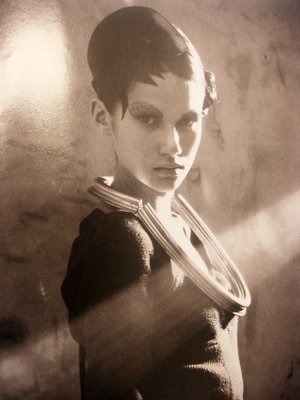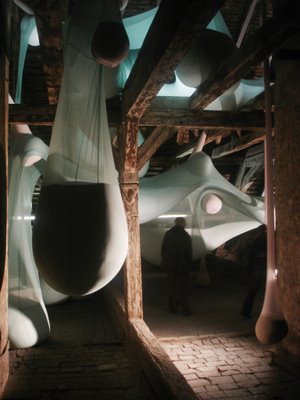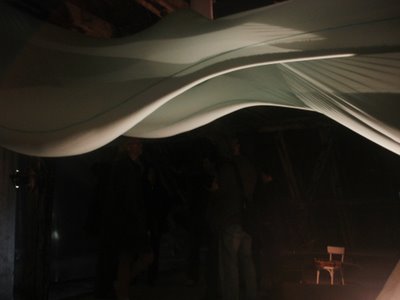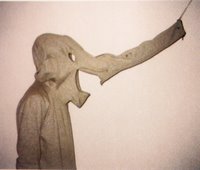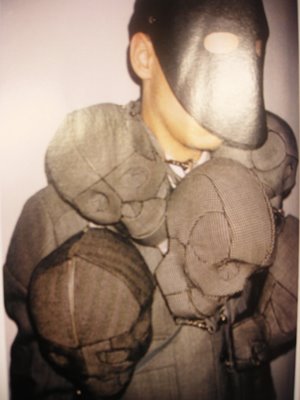Thursday, November 30, 2006
Sophia Kokosalaki (born in Greece, 1972)
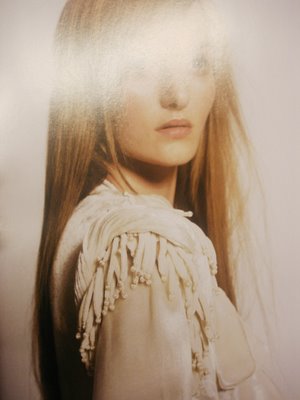

With Alexander McQueen and Hussein Chalayan, Sophia Kokosalaki became part of a school of London-trained designers who more than held their own alongside their european counterparts.
"When I do a show," she says, "I will throw up a mix of the feminine and commercially viable and then I will add my London aspect of seeing things, the experimentation, my rock aspect, and merge them a bit. The one is not good on it's own but nor is the other."
"You have to love it and you have to find people you are similarly obsessed. I would definitely get bored if I didn't experiment..."
"When I graduated, I admitted to myself, I didn't want to be an academic."
"I just want to produce interesting clothes, " she says. And if this seems overly simplistic, it should be pointed out, that she dedicates almost every hour of each and every day to doing just that with a passion and integrity that few others even aspire to. It is, by now, the stuff of legend that she spent no less than six months lovingly inscribing her own diary onto a jacket for her final collection at Central Saint Martins.
"I want every garment that goes out there to have something," Sophia says. "I'm not against dressing a lot of people but wouldn't like to do it light-heartedly or only for profit. I don't understand the concept of having a lot of people designing for you who you never even meet and then selling those designs under your name."
from Dazed&Confused
Wednesday, November 29, 2006
THE SOUND OF CLOTHES: ANECHOIC
Over the Spring '06 season, SHOWstudio is embarking upon a series of projects devoted to exploring 'The Sound of Clothes'. Continuing our commitment to re-thinking mainstream fashion editorial, we believe fashion audio to be a genuinely new frontier. Beyond overlaying imagery with non-specific sound - such as favourite songs or ambient music - the aim of The Sound of Clothes series is to explore a range of audio possibilities, such as discovering the actual sound a garment makes.
Anechoic is a 'collections story' project that uses sound instead of visuals to interpret the essence of key garments the A/W '06-7 season by leading fashion brands. A live recording session in a specialist recording studio -a hemi-anechoic chamber- on 1 June 2006 will be used to create a series of groundbreaking interactives that for the first time in fashion media, detail the precise sound of fashion materials such as feathers, sequins, glass crystals and beads, nylon, taffeta, leather, velvet, jacquard, zips and metallic chains. The live broadcast will also be filmed, providing motion image footage of model Zora Star working in the unconventional, futuristic studio environment, which will be edited to create abstract shorts of each audio 'shot'.
www.showstudio.com
Anechoic is a 'collections story' project that uses sound instead of visuals to interpret the essence of key garments the A/W '06-7 season by leading fashion brands. A live recording session in a specialist recording studio -a hemi-anechoic chamber- on 1 June 2006 will be used to create a series of groundbreaking interactives that for the first time in fashion media, detail the precise sound of fashion materials such as feathers, sequins, glass crystals and beads, nylon, taffeta, leather, velvet, jacquard, zips and metallic chains. The live broadcast will also be filmed, providing motion image footage of model Zora Star working in the unconventional, futuristic studio environment, which will be edited to create abstract shorts of each audio 'shot'.
www.showstudio.com
Henrik Håkansson - BROKEN FOREST Palais De Tokyo/ Tropical vegetal


Installation of 100 parts of tree trunks with epiphyt orchids HPS lights and High pressure mist.
"Throught The Woods to Find the Forest"... booktitle
seen on http://www.vvork.com/
Henrik Håkansson http://www.haakansson.net/
Cd-Cover: The profile is made to mix mystical natural environments with theatrical feeling (represented by floating carpet alike velvets)
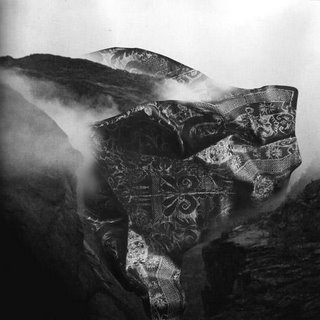

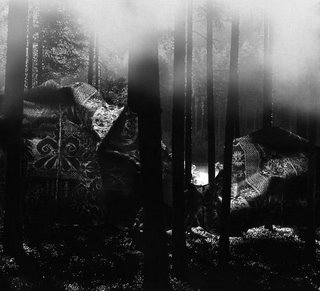
Deaf center (Erik K. Skodvin + Otto A. Totland) debut album "Pale ravine" out on Type records november 05.
Some lines from Type site : "‘Pale Ravine’ is an album which manages to blend elements of classical music with electronic music." "One of the most stand-out influences on ‘Pale Ravine’ is theatre, or at least the romance of all things theatrical."
seen on http://zojirushi.livejournal.com/
Monday, November 27, 2006
discovered a new brand - great Berubé
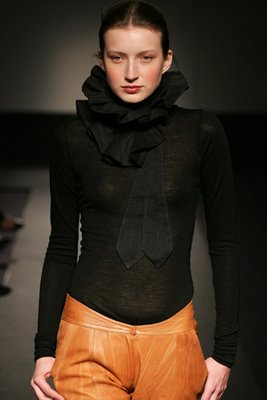

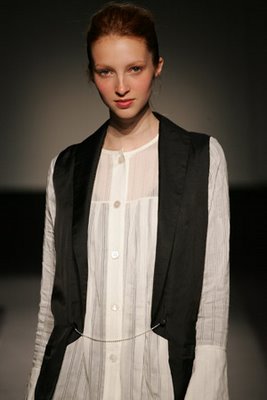
A relative newcomer to London Fashion Week (a/w 06), Julie Berubé (originally from Quebec) cut her teeth in the worlds of theatre, acting and writing before embarking on a career as a fashion designer.
The clothes are not intended for extroverts, but there lies the attraction. This quietly confident collection has a wearable aesthetic that i really like.
her homepage
Sunday, November 26, 2006
Saturday, November 18, 2006
Hussein Chalayan

Rather than reference styles from past eras, Chalayan, who is Turkish Cypriot and based in London, molds each collection around a concept derived from outside the fashion world, whether it be the role of women in Islamic society (chadors of varying lengths) or the plight of families forced to leave their homes in times of war (the inspiration for the table skirt).
He is equally dedicated to exploring technology (plastic dresses with shifting mechanized panels, and fabrics adorned with computer-generated prints). "The only new work you can do in fashion is via technology," he says. "It lets you create something you couldn't have done in the past."
more
and more
Wednesday, November 08, 2006
LIDIJA KOLOVRAT - Luís Serpa Gallery in Lisbon, 2001

Lidija was born in Bosnia in 1962. She initially studied cinema directing before switching to a fashion design course at the Textile and Fashion Design Institute in Zagreb.
She came to Portugal in 1990 and has been much in demand in the worlds of fashion and the scenic arts ever since.
see more
Tuesday, November 07, 2006
Portugiesische Mode

Alexandra Moura, Luis Buchinho, Ricardo Dourado, Lidija Kolovrat, Dino Alves und die Storytailors, sechs der absoluten Topdesigner Portugals, sind auf dem besten Wege, Barcelona als weltweite Trendhauptstadt abzulösen.
Portugiesisches Design zeichnet sich durch sorgfältigen Umgang mit den Materialien, eine hohe professionelle Kompetenz, Innovationsfreudigkeit und Mut zum Unkonventionellen aus. Mit diesem Ansatz ist Portugal in nur einem Jahrzehnt vom europäischen Armenhaus zu einer der prosperierenden und dynamisch wachsenden Regionen Europas geworden. Die Mode innerhalb der Modewoche MODA LISBOA war dabei seit mehr als 12 Jahren halbjährlich
das innovative und mediale Schlüsselereignis eines erstaunlichen Innovationsprozesses.
